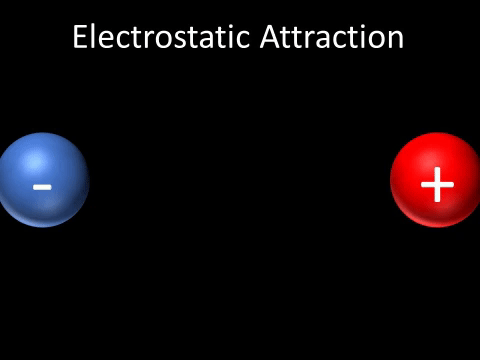Key Stage 3
Meaning
The electrostatic force is a force that causes charged objects to be attracted or repelled by one another.
About The Electrostatic Force
- Electrostatic Force is a force so it is measured in Newtons.
- Electrostatic Force is a non-contact force because it can act without objects touching.
Key Stage 4
Meaning
The electrostatic force is a force that causes charged objects to be attracted or repelled by one another.
About The Electrostatic Force
- Electrostatic Force is a force so it is measured in Newtons.
- Electrostatic Force is a non-contact force because it can act without objects touching.
- A positively charged and negatively charged object will be attracted to each other.
- Two negatively charged objects repel each other.
- Two positively charged objects repel each other.
- The electrostatic force is what holds ions together in an ionic bond.
- Protons in the nucleus experience the electrostatic force of repulsion and in order for fusion to occur protons must have enough energy to overcome this force of repulsion.
References
AQA
- Electrostatic forces, page 119, GCSE Physics, Hodder, AQA
- Electrostatic forces, pages 209, GCSE Combined Science Trilogy 2, Hodder, AQA
Edexcel
- Electrostatic forces, page 178, GCSE Combined Science, Pearson Edexcel
- Electrostatic forces, page 34, GCSE Chemistry, Pearson, Edexcel
OCR
- Electrostatic forces, pages 23, 59, 60, 66, Gateway GCSE Chemistry, Oxford, OCR
- Electrostatics, pages 94-95, Gateway GCSE Physics, Oxford, OCR


